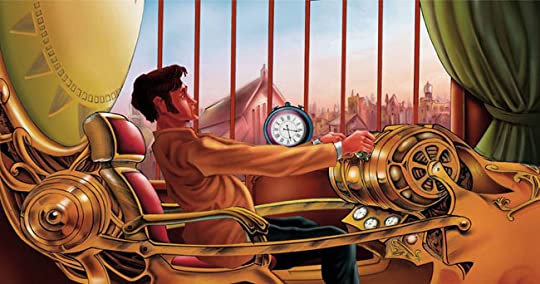1 In the nineteenth century, time travel was the stuff of science fiction. No one imagined it might someday be a reality. In 1895 H.G. Wells published a novel called The Time Machine. In this work of fiction the protagonist, who is never named, travels hundreds of thousands of years into the future.
2 While Well’s novel was not the first work of fiction to cover time travel, it was the first to spend time trying to explain the science behind this seemingly impossible feat. Wells theorized that when people viewed objects in three dimensions, there also existed a fourth dimension, time. Time, thought Wells, is invisible, but we can still move through it.
3 In chapter one, the Time Traveler elaborates on the fourth dimension, “‘Now, it is very remarkable that this is so extensively overlooked,’ continued the Time Traveler, with a slight accession of cheerfulness. ‘Really this is what is meant by the Fourth Dimension, though some people who talk about the Fourth Dimension do not know they mean it. It is only another way of looking at Time. There is no difference between time and any of the three dimensions of space except that our consciousness moves along it. But some foolish people have got hold of the wrong side of that idea” (Wells, p. 5)
4 In other words, proposed Wells, we travel to the left, to the right, up, and down, using our bodies. But we travel through time using our minds. We can remember yesterday. We can remember last year. When we wake up in the morning, we know it is not the same day as it was yesterday. Therefore, according to Wells, we travel with our consciousness. Someone confined to his or her bed might not move at all in the three visible dimensions, but he or she can continue to move through the fourth. On the other hand, someone confined to a bed who was unconscious might wake up and ask, “What day is it?” The loss of consciousness would have stopped that person from traveling in the fourth dimension, time.
5 Einstein proposed that there were four dimensions, and those dimensions included, up and down, left and right, forward and backward, and one dimension of time. He linked space and time together. He proposed that if one traveled through space, on a straight line, at a high enough speed, one’s observations about the world around him or her would be different from those traveling at a slower speed. In a nutshell, Einstein believed that if people could travel at the speed of light, they would be freed from the constraints of time, and free to travel to the future or to the past.
6 Over one hundred years later, the greatest scientists on the planet are still grappling with Einstein’s proposal. Stephen Hawking, a well known physicist, is convinced that time travel might be possible, but only to travel into the future. He believes that time, as a fourth dimension, must have wrinkles or tunnels, and that it is porous. Hawking believes if someone had a rocket that was fast enough, he or she could travel through one of those tunnels and skip ahead in time. He hasn’t completely abandoned the idea of traveling to the past, though.





